When adapting to the processing of film, paper, non-woven fabrics and other materials, the slitting and rewinding machine needs to meet the characteristics of different materials through the modular design of the equipment, flexible adjustment of process parameters and targeted configuration. Here's how to solve it:
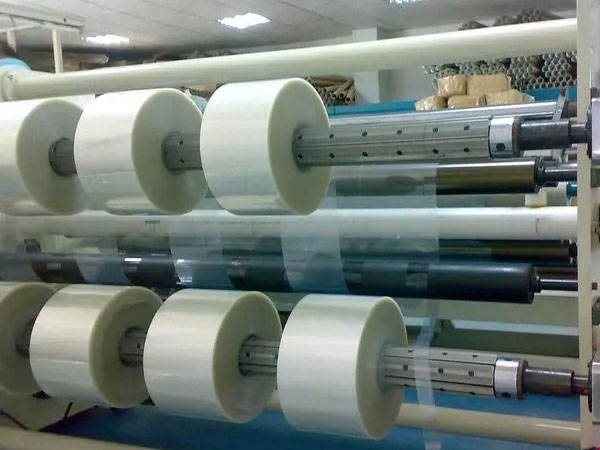
1. Material characterization analysis and adaptation challenges
• Films (e.g. PE, PP): easy to stretch, electrostatically sensitive, and require precise tension control.
• Paper: Tensile but dust-prone, requires a cleaning system and tear-resistant design.
• Nonwovens: Loose fibers with uneven thicknesses require anti-winding and guiding control.
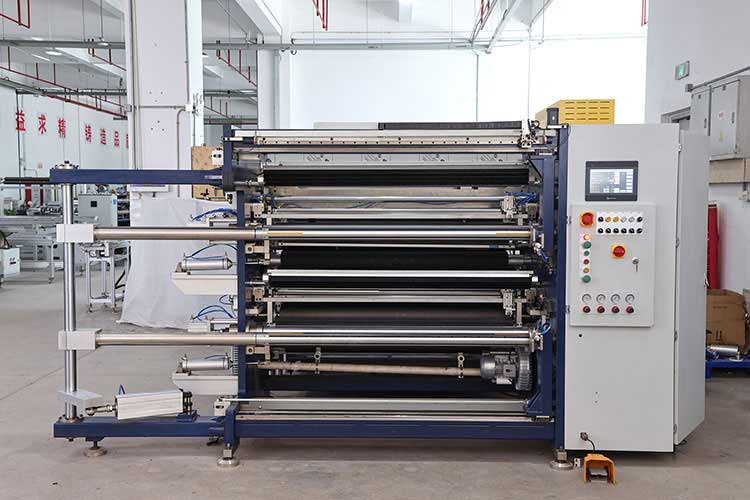
2. Key adaptation technologies
(1) Modular hardware configuration
• Unwinding/winding system:
◦ Film: inflatable shaft (non-slip) + servo motor (high-precision tension control).
◦ Paper: Mechanical chuck (anti-offset) + magnetic particle brake (stable tension).
◦ Non-woven fabric: double-station winding (adapting to fluffy materials) + elastic pressure roller (anti-deformation).
• Cutting unit:
◦ Film: high-frequency round knife (no flash) or laser cutting (high precision).
◦ Paper: alloy cutter (wear-resistant) with chip suction device.
◦ Nonwovens: serrated knife (anti-fiber pulling) or ultrasonic slitting (edge banding).
• Guide Roller System:
◦ Film: Silicone covered roller (anti-scratch) + static eliminator.
◦ Non-woven fabrics: Driven guide rollers (to reduce frictional resistance).
(2) Intelligent control system
• Multi-stage tension control:
◦ Film: 0.5-2% tensile strength of the material (anti-tensile resistance).
◦ Nonwovens: closed-loop PID control + floating roller compensation (adapts to thickness changes).
• Dynamic Guidance:
◦ CCD camera/IR sensor monitors the edge in real time with an accuracy of ± 0.3mm.
• Parameter memory function: store process recipes for different materials (e.g. speed, tension, cutting pressure).
(3) Material-specific accessories
• Film processing: Corona treatment module is added (to improve surface tension).
• Paper processing: Equipped with a spray humidifier (to reduce dust).
• Non-woven processing: Retrofitting of a pre-pressing device (to avoid loose winding).
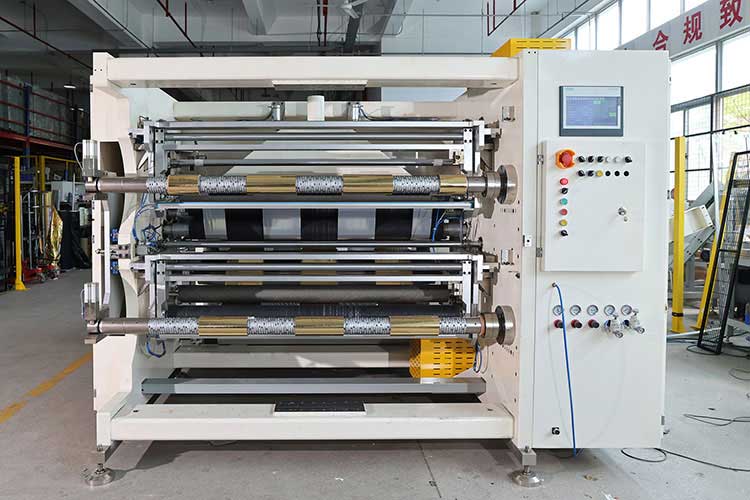
3. Key points of process optimization
• Speed Matching:
◦ Film: 50-300m/min (adjust according to thickness).
◦ Non-woven fabric: 20-100m/min (low speed anti-fiber displacement).
•Environmental control:
◦ Film/non-woven fabric: constant temperature and humidity workshop (anti-static and deformed).
◦ Paper: Humidity 40-60% RH (anti-frizz).
4. Comparison of typical configuration schemes
| Type of material | Cutting method | Tension control (N/m) | Typical speed | Special configurations |
| PET film | Round knife + cooling system | 50-150 | 200m/min | Static elimination + in-line defect detection |
| Paper | Flat knife + dust collector | 80-200 | 150m/min | Edge lubrication device |
| SMS non-woven fabric | Ultrasonic knife | 30-80 | 60m/min | Fiber adsorption device |
5. Maintenance and commissioning suggestions
• Quick changeover: Use quick-change turret (changeover time < 15 minutes).
• Wear management: ceramic coated guide rollers (3 times longer life).
• Operation training: set graded alarm thresholds for different materials (e.g. tension overrun±5%).
Through the above technical adaptation, modern slitter rewinders can realize flexible production of multi-material processing, and the efficiency loss can be controlled within 10%, while meeting the high-precision requirements of medical grade non-woven fabrics (error < 0.1mm) or optical films (dust-free cutting). In the actual selection, the core module needs to be configured according to the proportion of materials, and 20% of the upgrade space should be reserved.
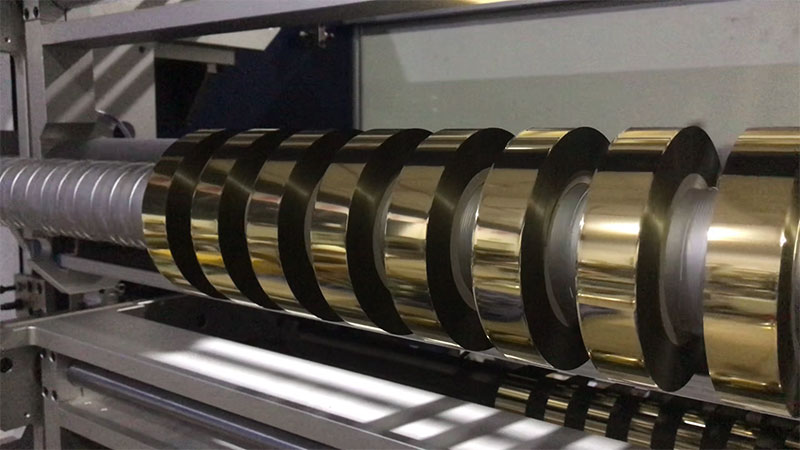
This article will systematically introduce a comprehensive guide from basic operations to advanced techniques to help you become an expert in the field of hot stamping film slitting.
10. January, 2026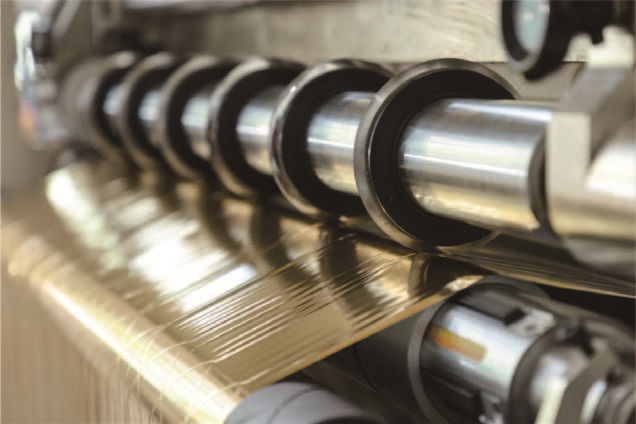
To avoid investment mistakes, the following five key questions must be thought through before buying.
10. January, 2026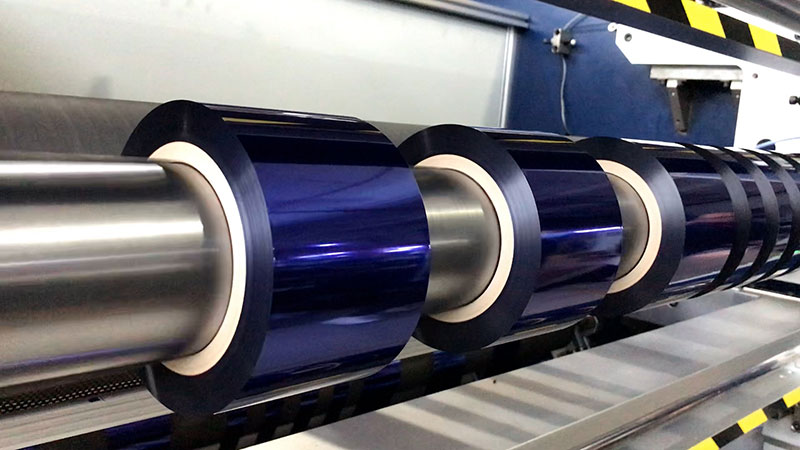
This article will comprehensively analyze the key points of hot stamping film slitting machine selection to help you make an informed decision.
09. January, 2026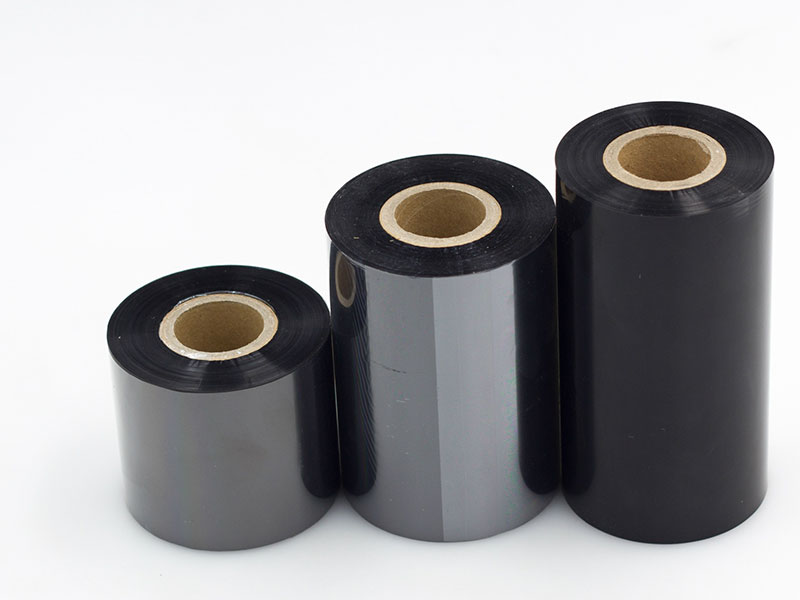
ribbon slitting machines act as skilled tailors, accurately cutting wide ribbons into narrow ribbons of specified widths.
09. January, 2026
Today, we'll delve into the features of both devices to help you make a more informed choice.
08. January, 2026